The Deeper Meaning of Fairy Tales
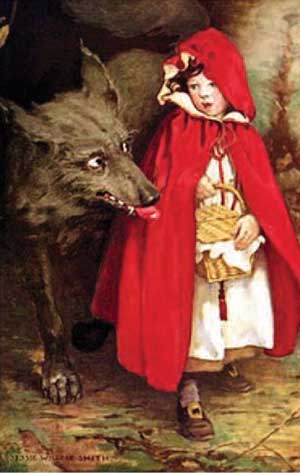
Don’t stray from the path.
Don’t disobey. Don’t eat the apple,
the gingerbread house,
your stepdaughter’s heart.
Cinderella slaves for years for her heartless stepfamily; Beauty offers her life to the Beast at her father’s request. A new queen, locked away in her king’s dungeon, tries desperately to spin straw into gold to earn his affection. Or: the youngest prince is the only one to listen to the wise man, share his bread with the crone, cut off the white cat’s head. The soldier waits loyally for ninety-nine nights outside the selfish princess’s bedroom, then leaves on the final, hundredth night. Theseus kills the Minotaur. Fairy tales, we are told, abound with morals.
The most potent traditional stories are retold across generations and cultures; variations of Cinderella can be found on every continent, from “Donkeyskin” and “Cap-o’-rushes” in Europe to “Rhodopis” in Egypt and “Beauty and Pock Face” in China. We grow up believing that these stories have some timeless wisdom to offer us about the nature of good and evil.
Yet as the tales move, from teller to teller and down through time, they shift. More often than not, they reflect the storyteller’s paradigms rather than any universal truth. As our values change, so do our stories. Contemporary retellings of Cinderella, such as the Renaissance-set film Ever After or the lesbian young adult novel Ash, bear little enough resemblance to the 1959 Disney film, or indeed to each other. None of these seem to have much in common with older versions of the tale like Perrault’s “Cendrillon” or the Grimms’ “Aschenputtel,” in which the ugly stepsisters cut off their toes and heels to fit into the glass slipper (until their copious bleeding gives them away), and later have their eyes pecked out by avenging birds. When something in an old tale makes a new audience uncomfortable, it is excised and replaced, like a stepsister’s heel.
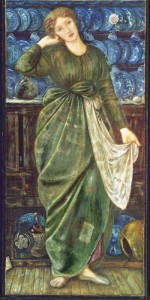
The Brothers Grimm themselves, whose variations on German folklore are often incorrectly considered “original” versions, changed their own moral viewpoint even between printings. The first edition of their Kinder- und Hausmarchen, or Children’s and Home Tales, contained far more sex and graphic violence than would be permitted in any “children’s tales” today. For instance, the witch discovers Rapunzel’s romance with the prince not by finding them together, but when Rapunzel asks why her clothes have suddenly become too small. The answer: she’s pregnant. (It is not surprising to find this plot point notably absent from Tangled.)
The Grimms’ second edition, ten years later, was scrubbed of many similar sexual references. Intriguingly, though, the violence was amplified, from the child-hungry witch who captures Hansel and Gretel, to Snow White’s stepmother, who is forced to dance at the heroine’s wedding in red-hot iron shoes until she falls down dead. In this second edition, Cinderella’s stepsisters are much more brutally maimed.
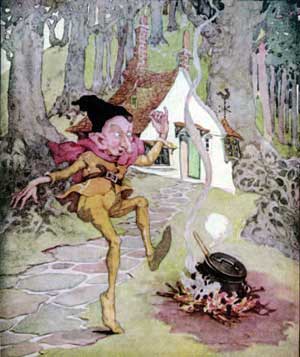
Yet no matter how they change, there are archetypal concepts common to nearly all iterations of this particular fairy tale. A “Cinderella story” in modern vernacular means rags-to-riches and overnight success. However, almost all the traditional versions of the tale make it clear that Cinderella starts out as a member of the aristocracy, or at least of the upper classes. The true Cinderella story is that of a deposed noble returning to her rightful place, of social hierarchy restored. What the prince sees in her is not just beauty or goodness, but obvious nobility.
This conflation of beauty, goodness, and nobility occurs in many of our most beloved fairy tales. If you can feel a pea through a hundred mattresses, your sensitivity marks you as royal. Snow White is the fairest in the land in more than one sense of the word: she is kind and just as well as beautiful, unlike her pretender-to-the-throne stepmother, and she is also pale and therefore racially pure. It is easy to forget how emphatically fairy tales try to show us the innate superiority of the ruling classes.
Similarly, ugliness in a fairy tale—with attendant implications of disease, poverty, age—means evil. Only in recent retellings of Cinderella will you find a beautiful stepsister. In illustrations for Bluebeard the titular character is usually overweight and turban-clad, his beard long, curly, and black; he kills his brides with not a European sword but an Eastern scimitar. Fairy tale evil too often carries the mark of ethnic otherness. A witch will almost always have a hooked nose.
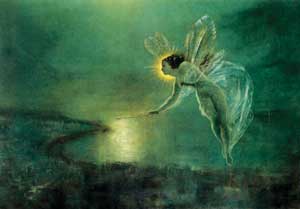 Anti-Semitism plays a particularly strong role in many European fairy tales. The story of Rumpelstiltskin, for instance, with its wizened, gold-hoarding, ostracized villain, can easily be read as an anti-Jewish tale. The prominent contemporary fairy tale reteller Jane Yolen pushes back against this prejudice in several of her books, such as Briar Rose, a retelling of Sleeping Beauty set in a Nazi concentration camp. Fairy tales, first told within small and often insular communities, warned listeners of the danger that lay in trusting outsiders.
Anti-Semitism plays a particularly strong role in many European fairy tales. The story of Rumpelstiltskin, for instance, with its wizened, gold-hoarding, ostracized villain, can easily be read as an anti-Jewish tale. The prominent contemporary fairy tale reteller Jane Yolen pushes back against this prejudice in several of her books, such as Briar Rose, a retelling of Sleeping Beauty set in a Nazi concentration camp. Fairy tales, first told within small and often insular communities, warned listeners of the danger that lay in trusting outsiders.
As the oral folktale gave way to printed transcriptions, and then to novels, film, and television, these archetypes of good and evil—these symbolic shortcuts—stayed with us. Writers began to play with them in exciting ways; Emily Bronte’s Heathcliff is a particularly clear example. He is the changeling, the demon lover, the dark and threatening “other” of many folk tales. The Bronte sisters were almost certainly influenced by traditional ballads such as “The Raggle-Taggle Gypsy” and “The Blackjack Davy,” in which the seductive, wild gypsy lad charms good English girls away from their quiet lives and boorish fiancés, often to tragic ends.
Our most beloved stories still define goodness through beauty and nobility, and evil through ugliness and otherness. But the truly dangerous effect of these archetypes comes when we reverse that equation—when we start to assume that beauty means goodness, or ugliness evil. Most modern parents would balk at teaching their children this lesson, and yet popular media today still tends toward the classic beautiful-hero, ugly-villain formula. It is standard film-studio procedure to ensure that no other actor ever appears taller than the hero. The camera’s gaze lingers on the most traditionally beautiful woman, almost invariably the heroine.
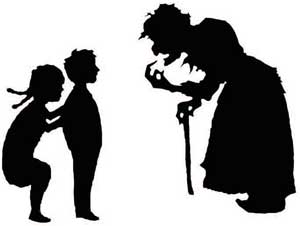
Of course, these archetypes have never reflected the faces of good and evil in our own world. Physical beauty, youth, wealth, nobility: none of these correlate with goodness, and many spiritual traditions contend that they actually work against it. Camels pass through needles before rich men enter heaven. Similarly, we know that in the real world evil may cause the ugliness of poverty, disease, and injustice, but personal ugliness is never a signpost for evil.
Yet the work that narrative does in our lives, in our worldviews, is deeply ingrained. Fear of the other, pre-judgment based on established narrative, is a very real and direct cause of violence: consider the recent events in Ferguson, Missouri, or in far too many other places around the world. Stories have the power to teach us what to think of those who are different from ourselves. Not only that, but they can teach us that looking different and being different are one and the same. It seems a childish lesson, one that we claim we’ve already learned; yet the face of
evil is still that of the other.
As tellers of stories (which all of us are), it might seem an impossible challenge to push back against this conflation of physical and ethical loveliness. Some writers argue that it is morally wrong to create an attractive villain, and thus to make evil itself attractive. Others contend that an ugly hero is a more potent symbol of virtue, or at least a more relatable one.
Neither solution satisfies. We want beautiful heroes and villains to love, and ugly ones too, and we want those definitions of beauty and its lack to expand beyond the lily-white European standards our fairy tales and we have inherited. Humans are creatures of metaphor. It is the symbolic, even more than the literal, that moves our hearts. Man cannot live on bread alone. We can look to stories for guidance and for answers. These same fairy tales and myths, these potent metaphors that can seem like traps for prejudice and hypocrisy, also offer us an out.
There are spotless maidens and evil crones in fairy tales, true, but there are monsters as well, and it is in the monstrous that good and evil exist together, much as they do in our own hearts. The Beast has a prince within him, the selkie a beautiful maiden or youth, the werewolf an innocent man. Sometimes these monstrous shiftings, these transformations, are arguing simplistically for Divine Right once again … but sometimes, oh, sometimes they enact something far more wondrous strange. Red Riding Hood emerges from the gut of the wolf, and we are hunter and girl and beast all at once as we hear the tale. We see ourselves reflected in the broken mirrors of all these imperfect stories.
The fairies themselves, for whom the tales are named, are the most monstrous of all. The bottom-of-the-garden darlings left to us by Victoriana are an almost blasphemous dilution of the original power of the fey, the Folk, the Sidhe. Fairies could lead you over a cliff or pull you through time itself, as they did with Rip Van Winkle. La Belle Dame Sans Merci offers such seductive richness to her knight that all he has left, after she leaves, is emptiness. The fruit of the fairy court is the most delicious you will ever taste, but it will leave you ruined. Yet leave a bowl of milk at your door and they will thank you.
Fairies are the same as their namesake tales: beautiful and terrible, bad and good, haunters of forests and flower-spirits, stealers of children and blessers of hearths. They are changelings; they change.
So do we.
From Parabola Volume 39, No. 4, “Goodness,” Winter 2014-2015. This issue is available to purchase here. If you have enjoyed this piece, consider subscribing.
